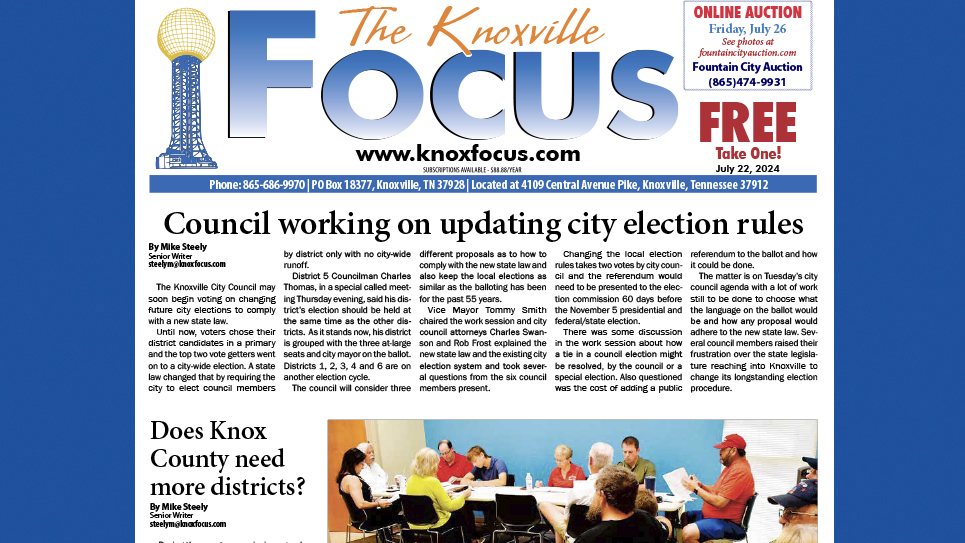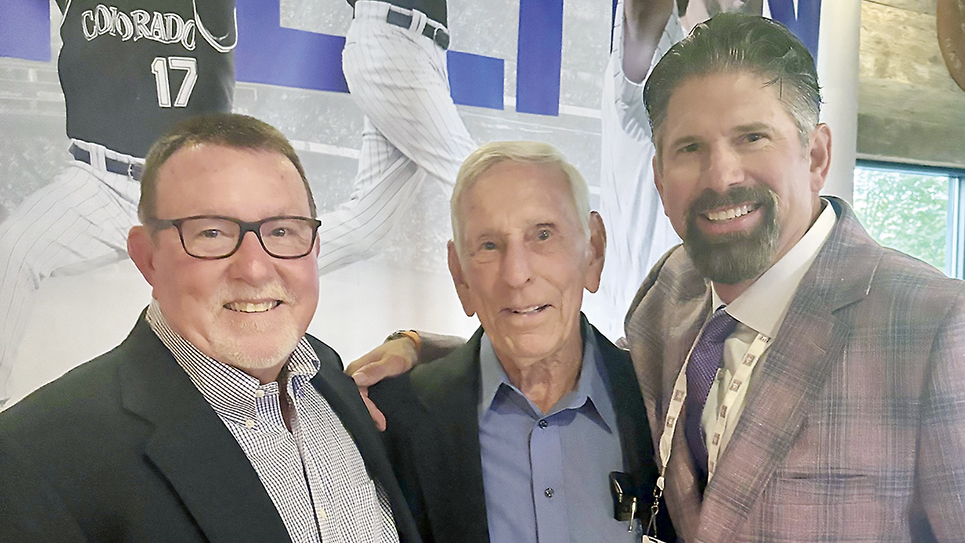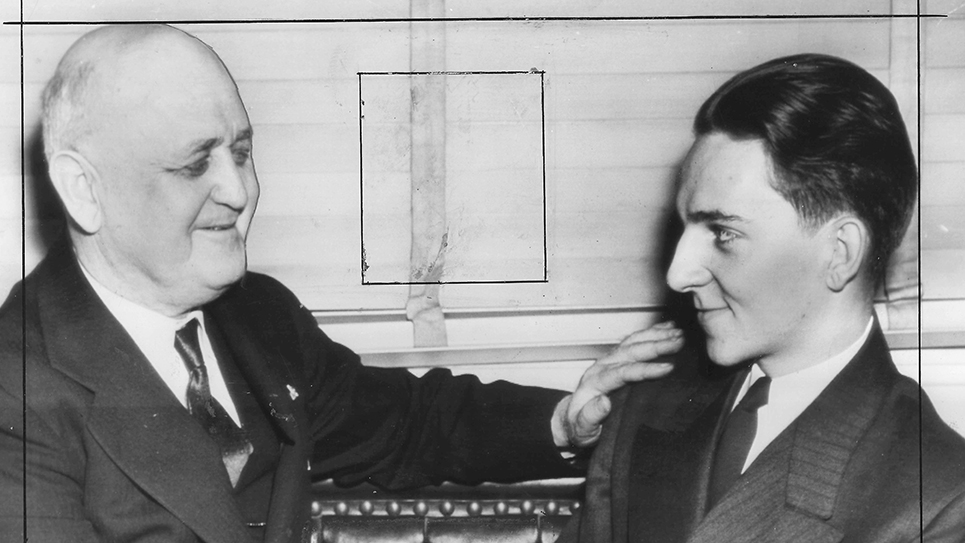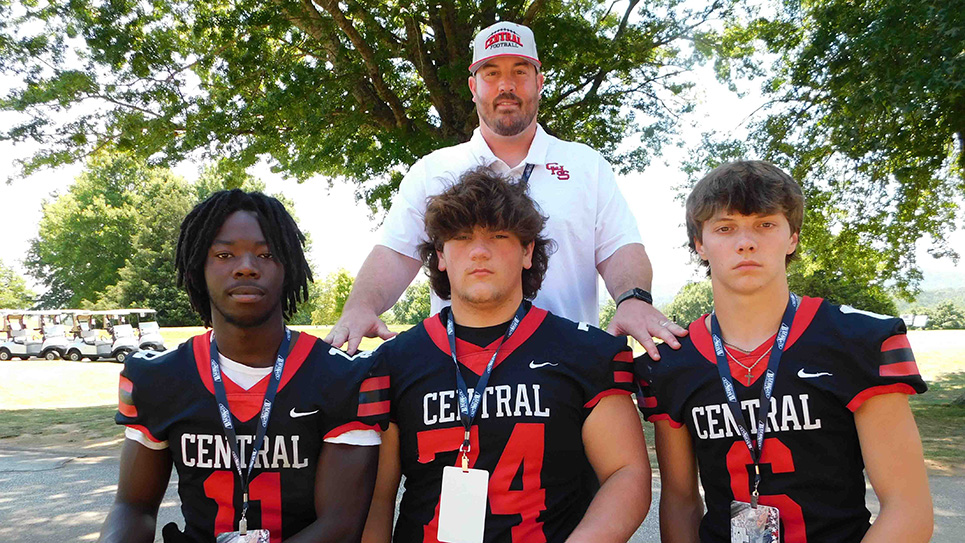The ‘Boling’ in Thompson-Boling Arena
By Tom Mattingly
Legends are often found in interesting places. There was once a true Tennessee legend living on the quiet side of Holston Hills, on a street called Westover Terrace.
Dr. Edward J. Boling, the 17th president of the University of Tennessee (1970-86), may not have thought of himself as a legend, but he was one. A towering figure in the university’s history, Boling was a visionary, a man who thought “outside the box” long before that term became popular.
Once the university historians began assembling the bits and pieces of his life, Boling stood with Andy Holt, Joe Johnson, and a great many others.
Ed Boling said he always wanted to be surrounded by people who were smarter and better than he was. He was decisive, to-the-point, honest, and all those other adjectives used to describe great leaders.
“It’s hard to misunderstand Dr. Boling,” Dr. Holt once said.
His tenure as president was the culmination of a distinguished University of Tennessee career that started in 1961. When you see the area to the west of 15th Street, Stadium Drive, or Phillip Fulmer Way, all the way to a railroad yard once called “West Knoxville,” his influence manifests itself.
Historically, it’s called the Yale Avenue Urban Renewal Project.
The project, still considered controversial, was part of a deal the university struck with the Knoxville Housing Authority that involved the relocation of 400 families and demolition of 300 buildings.
The expanded campus stands today as a powerful tribute to the visionaries of that day, who dreamed great dreams and lived to see those dreams become reality. Boling led the way. When someone gave him the ball, he took it and ran with it. It was always, “Damn the torpedoes, full speed ahead.”
Knoxville News Sentinel sports editor Tom Siler reported that in 1965-66, “Dr. Ed Boling, to be named president a few years later, seized upon unique features of Urban Renewal legislation (features later repealed by Congress) to develop fraternity row, the outdoor track facility, lighted playgrounds for students, and an aquatic center.”
Boling became a great supporter of athletic programs across the campus. He was a regular at football practice at Hudson, later Haslam Field. He helped lead the way for the development of an ultra-successful women’s athletics program.
“When we were in Alumni Memorial Gym in 1974,” said Pat Summitt, “I asked Dr. Boling to come watch us. It was the Tennessee Tech game, and there were about 100 people there. He started coming all the time. In 1988, after the 1987 national championship, he and Carolyn started a private fund for championship rings.
“He was instrumental in supporting women’s athletics and allowing us to do what we’ve done over the years.”
Boling looked back fondly at a career that led to many of the institution’s great moments.
He became president during a tumultuous time on campus. For the first time, faculty, staff, students, and administrators were seriously debating the presidential selection process.
“His backers observed that the institution needed, first and foremost, a person who could work effectively with governors, state officials, and legislators,” university historians James Riley Montgomery, Stanley J. Folmsbee, and Lee Seifert Greene wrote in 1984.
They also wrote that there was, “no desire to substitute an unknown for a proven Tennessean.”
The Board of Trustees named Boling president on Dec. 16, 1969, with some groups terming his selection a “downright insult.” However, his candidacy enjoyed strong support, and the life and mission of the university went on.
As president-elect, Boling started a series of meetings with faculty and students to try to establish better communications in the difficult position he found himself.
The presidential selection process has been much more open since then, and the university has been the better for it.
In the spring of 1970, the University of Tennessee Singers were in Memphis to perform at functions featuring Dr. Holt’s unique brand of homespun humor.
The travel party stayed several nights in a bomb shelter owned by Hoyt Wooten, then the owner of WREC Radio. Boling had as good a time as anybody, harking to his collegiate days. He was one tough ping-pong player, rolling up his sleeves and competing fiercely with U.T. students much younger than he.
Finally, history records that lead donor B. Ray Thompson would not commit to the naming of the arena until Ed Boling’s name was added. Until then, no one had broached the subject of Boling’s name being on the arena. “It had never crossed my mind, because I was still president,” said Boling.
Boling said it was an honor to see his name affixed to the arena. “I doubt there could be anything bigger on campus unless it was the stadium. The building gets mentioned in some way every day. There are all kinds of events there. It was the first facility named for me.”
He remembered his days in the statistics department in the late 1940s or early 1950s. One department head told him, prophetically, that if he kept on the path, he had charted for himself, “You’ll come back and be higher than me.”
He did, and that’s exactly what happened.
He went all the way to the top.






